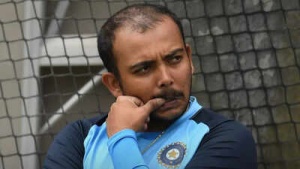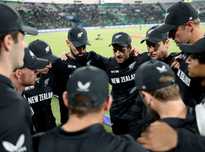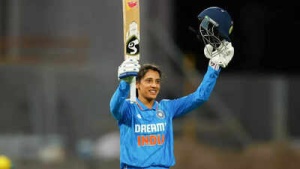India’s talent-laden T20I squad will begin a new chapter in its quest to add more silverware to the trophy cabinet as the Asia Cup returns this week. The T20 World Champions bid farewell to Rohit Sharma, Virat Kohli, and Ravindra Jadeja — stalwarts who, for over a decade, held the line with skill, grit, and authority — after the heady high in Barbados last year. Their exits marked the end of an era but also the beginning of an intriguing transition.
Now, the spotlight shifts to the maverick captain Suryakumar Yadav, alongside the gifted Shubman Gill, the tried-and-tested Hardik Pandya and the indefatigable Jasprit Bumrah. Together, they carry the responsibility of ensuring India’s dominance in the game’s most popular format.
Go Beyond The Boundary with our YouTube channel. SUBSCRIBE NOW!
“This is the first big tournament we are playing after the T20 World Cup in 2024. We played three or four bilateral series, but this is a good tournament to test ourselves — and there are a lot of T20Is after this,” Surya said when the Asia Cup squad was unveiled last month in Mumbai. “I think we have close to 20-22 T20Is in total before we play our first game in the 2026 World Cup. So, the journey starts from the Asia Cup.”
Defending champions and hosts India, as always, begin as overwhelming favourites in cricket’s most heated regional contest.
The tournament brings with it the weight of history, the lure of bragging rights and the chance for teams to fine-tune ahead of the T20 World Cup, to be jointly hosted by India and Sri Lanka next year.
India and Pakistan will once again command the spotlight, even if the latter are no longer the force they once were. However, they made a statement win when they thumped Afghanistan by 75 runs in the Triseries final in Sharjah on Sunday. Yet, their clash remains certain to grip the cricketing world beyond the subcontinent and send the cash registers ringing. The format is structured in a way that almost guarantees at least two meetings — and possibly a third in the final, which quite astonishingly has never happened before.
This edition, however, is far from a two-horse race. Sri Lanka have the knack of lifting their game at multi-nation tournaments while Afghanistan’s spin-heavy attack can turn matches on their head. Bangladesh, too, will look to shed their perennial underdog tag and force themselves into the reckoning.
The eight teams have been split into two groups: India, Pakistan, UAE and Oman in Group A; Sri Lanka, Afghanistan, Bangladesh and Hong Kong in Group B. Group B shapes up as the tougher pool, with one of the three Test-playing nations likely to miss out on a Super-4 berth. In that stage, each team plays the others once, with the top two qualifying for the title clash.
Beyond the rivalries, the Asia Cup is also a window into cricket’s future. Rising stars like Abhishek Sharma, Pakistan’s Saim Ayub and Sri Lanka’s Kamindu Mendis have the chance to carve their names into folklore while veterans face the test of keeping their legacy intact.
The venues — Dubai and Abu Dhabi — are expected to serve up sluggish decks because of excessive heat. Although there are talks that the wickets have been spruced up, the surface at the Dubai Stadium is likely to play slow and low, with dew having a major impact on outcomes. It quite explains why the teams have packed their squads with slower bowlers.
The open stadium in Abu Dhabi may, however, offer something for the quicker bowlers. But that remains to be seen. While other teams have had more match practice heading into the tournament, most of India’s players return after a three-month layoff. Incidentally, the last time Team India turned out in T20 colours was on Feb 2 this year, when they thumped England at the Wankhede.
India’s opening game against UAE on Wednesday should help Gautam Gambhir set the house in order after four energy-sapping training sessions in unforgiving heat and humidity.
Catch Lovlina Borgohain's inspiring story on Game On, Episode 5. Watch Here

 Smriti Mandhana's Blistering Century and Sree Charani's Debut Heroics Power India to Crushing T20I Victory Over England
Smriti Mandhana's Blistering Century and Sree Charani's Debut Heroics Power India to Crushing T20I Victory Over England
 Prithvi Shaw Admits to Career Setbacks: Faulty Choices and Distractions Derailed Cricket Focus
Prithvi Shaw Admits to Career Setbacks: Faulty Choices and Distractions Derailed Cricket Focus
 Woakes Rueful After Close DRS Calls Favor India in Edgbaston Test; England Missed Early Domination
Woakes Rueful After Close DRS Calls Favor India in Edgbaston Test; England Missed Early Domination
 Challenge Your Perception: Only 1% Can Decipher This Animal-Filled Optical Illusion
Challenge Your Perception: Only 1% Can Decipher This Animal-Filled Optical Illusion
 India's Fielding Woes and Batting Collapses Blamed in First Test Defeat Against England: Former Selector Urges Patience
India's Fielding Woes and Batting Collapses Blamed in First Test Defeat Against England: Former Selector Urges Patience
 Neeraj Chopra Taps Jasprit Bumrah as Potential Javelin Prodigy
Neeraj Chopra Taps Jasprit Bumrah as Potential Javelin Prodigy
 Neeraj Chopra Classic: Javelin Throwing World Descends on Bengaluru for Gold Event
Neeraj Chopra Classic: Javelin Throwing World Descends on Bengaluru for Gold Event
 Black Caps to Face Australia, England, West Indies & South Africa in Action-Packed Home Summer
Black Caps to Face Australia, England, West Indies & South Africa in Action-Packed Home Summer
 Bumrah's Birmingham Nets Session: Pace Variations and Test Readiness in Focus
Bumrah's Birmingham Nets Session: Pace Variations and Test Readiness in Focus
 Smriti Mandhana Makes History, Becomes First Indian Woman to Score Centuries in All Cricket Formats
Smriti Mandhana Makes History, Becomes First Indian Woman to Score Centuries in All Cricket Formats